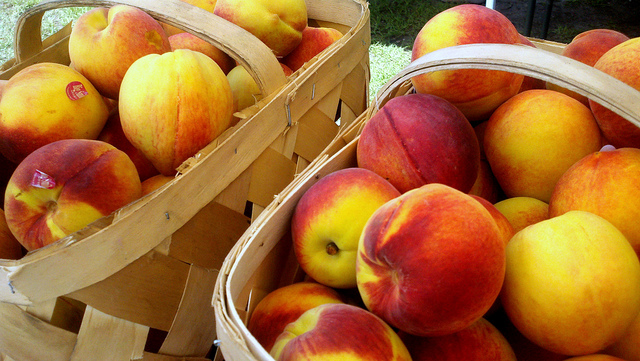Make these simple positive changes in your lifestyle and say goodbye to a throw away culture.
1. Take reusable bags with you
Plastic bags are the bane of the ocean. Like other plastic products littering our waterways and filling our landfills, plastic bags are ingested by sea creatures and birds who mistake them for food. And considering that 200,000 plastic bags are dumped into landfills each hour, using a reusable canvas bag is an easy way to avoid waste.
Still have plastic bags around the home? You can recycle them at your local supermarket, or check out this great DIY and learn how to crochet them into sleeping mats for those sleeping rough.
2. Getting take away? Say no to plastic straws, try and find places that avoid Styrofoam packaging, or better yet, BYO reusable containers
Styrofoam is notoriously problematic for the environment as it never fully breaks down in the environment and is derived from petroleum. By taking your own reusable containers with you when ordering take away, you're avoiding additional and forever-lasting waste that is often mistaken for food.
Last year a team of scientists discovered that mealworms were able to harmlessly ingest Styrofoam, which could provide a solution to mounting landfills.
Read More: Four product packaging types to reconsider
What you can do
Reuse everything you can and save money by avoiding over consumption
savings pledged
3. Remember to pack a keep cup
Keep cups are the simple solution for waste generated by the Australian love of coffee. Considering that single-use coffee cups are often made from Styrofoam or lined with polyethylene, which makes them unrecyclable.
Keep cups not only last longer, but are made from recyclable material. Glass and ceramic options are also available.
Read more: Why you should invest in a keep cup
4. Use public transport, walk, or carpool more often
Each car off the road makes a difference, no matter how small! Switching to public transport as your mode for travel – perhaps for journeys less than 10km away – not only reduces pollution but is also a frugal alternative. If public transport is not a viable option, consider carpooling with your colleagues to work, and of course, walk when you can to keep a healthy mind and body.
Read more: Switch to public transport for at least 5km a week
What you can do
Switch to public transport for 10km or more every week
savings pledged
5. Seek local, seasonal produce at the supermarket or visit farmers markets
Fruit and vegetables are more nomadic than ever and their carbon footprint is huge. With lemons from America, asparagus from Peru, and garlic from China, hydroflurocarbons (HFCs) – a greenhouse gas that depletes the ozone layer – is used to refrigerate the produce on their journey.
Buying local produce means that you are not supporting the massive greenhouse gases that are emitted from transport and packaging. Plus, your food will be fresher and you will be supporting Australian farmers.
Read more about why it is important to visit your farmers markets by 1 Million Women community member, Susan Hutchinson who wrote about her year without Coles or Woolworths
Can you do organic and locally grown food on a budget? Find out how
What you can do
buy local, fresh, and in-season when you shop for fruit and veg
savings pledged

Image: North Charleston Farmers Market Produce via Flickr
6. Avoid over packaging at the supermarkets: choose fruits and vegetables sold loose, opt for glass jars, or find recyclable packaging
When did it become necessary for bananas to be wrapped in plastic? Redundant packaging and excess plastic are common in supermarkets. Often it is difficult to avoid, but whenever possible, opt for less. We typically wash fruit and vegetables after we buy them, whether they are wrapped in plastic or not, so choosing loose produce and steering clear of the plastic bags at the end of each section will barely make a difference.
Check out these great DIY gift ideas using glass jars
What you can do
Say 'NO' to wasteful packaging, plastic bags, and bottled water
savings pledged
7. Seek out one wild food source in your area
Get to know your neighbourhood wildlife. Just recently I discovered a rosemary bush surrounding a street sign in my local area, but it could be native Australian bush tucker that grows on nature strips or public parks. Indigenous Australians thrived in a food culture that featured more than 5,000 different native foods. Lemon myrtle and warrigal greens might be closer than you think!
Read more: Why haven't we embraced indigenous foods?
8. Meet your neighbours: having a friendly community means more sharing
Neighbourly sharing can easily go beyond sugar and eggs. Save money and avoid more 'stuff' by setting up a sharing scheme: you can use my lawnmower if I can use your leaf blower!
Not an option? Join the online community TuShare and start giving and receiving for free! Check out this interview with TuShare's general manager Imogen Baxter
Read more: How to use the sharing community to reduce waste
9. Shop second hand
Shopping second hand prolongs the life of perfectly good items that would otherwise be thrown away. Luckily, and partly thanks to Macklemore, thrift shopping and vintage clothes has become fashionable.
Read more about the benefits of shopping second hand from guest writer Amanda Caldwell's blog: why second hand is not second best
10. Find a local butcher that uses butcher paper rather than buying local meat cuts on Styrofoam
As it was mentioned, Styrofoam is a hugely problematic plastic as it does not breakdown in the environment, only disintegrates into small pieces and becomes ingested by marine life. Compare this to butcher paper, which is typically both recyclable and compostable.
Read more: From the land to the sea – how what we throw away ends up in the ocean

